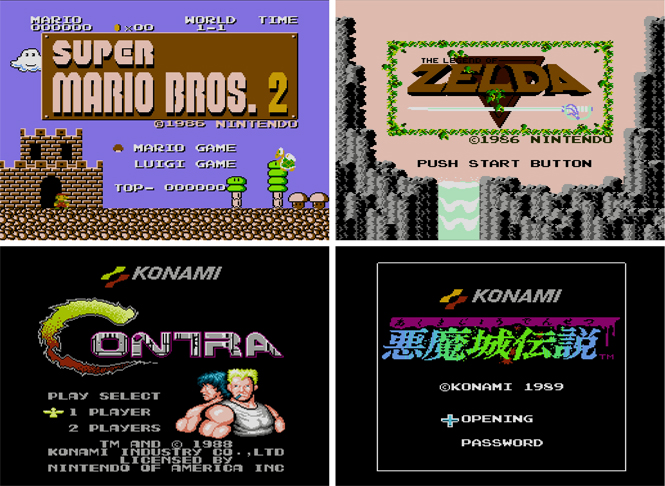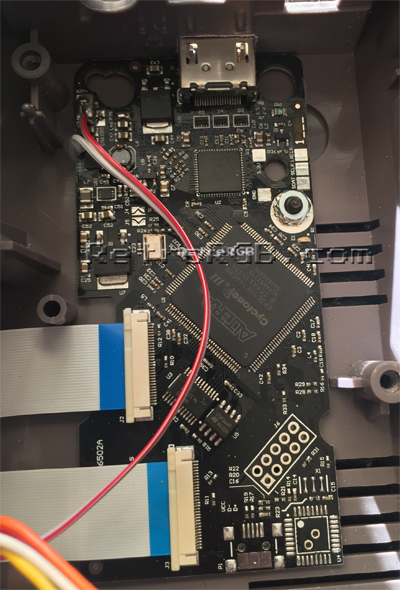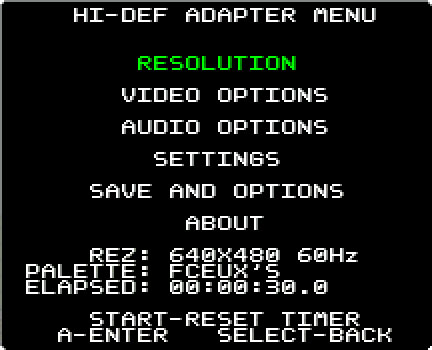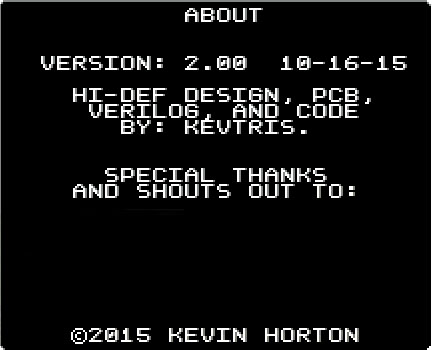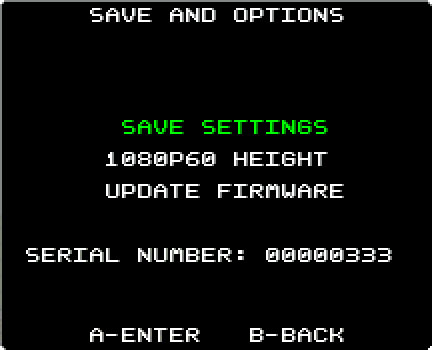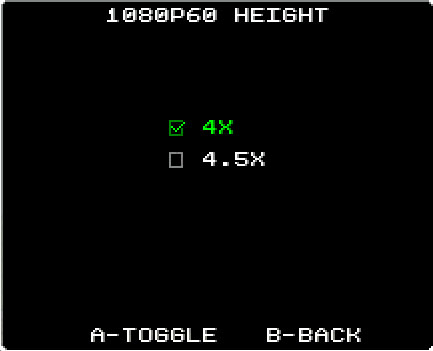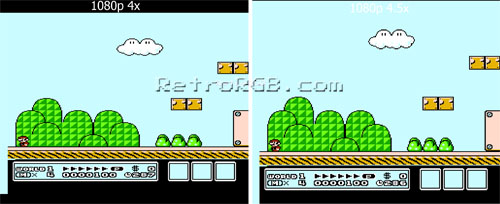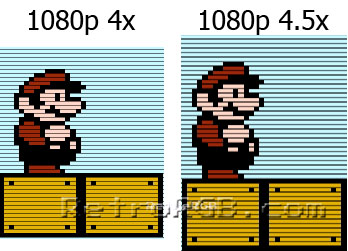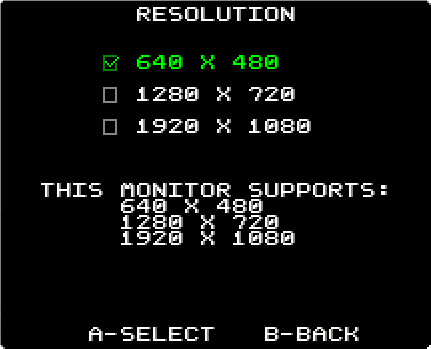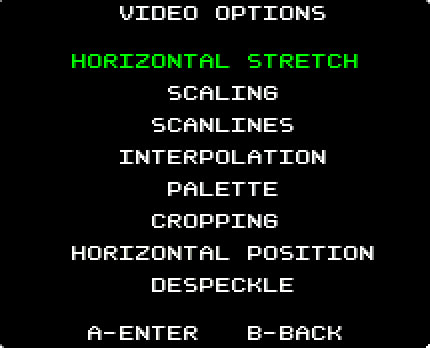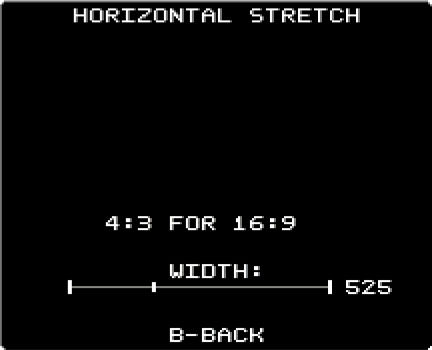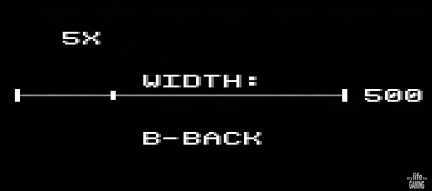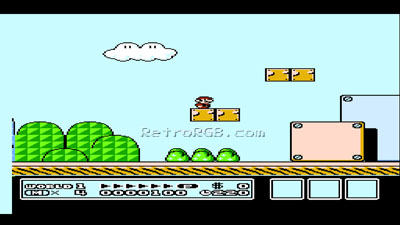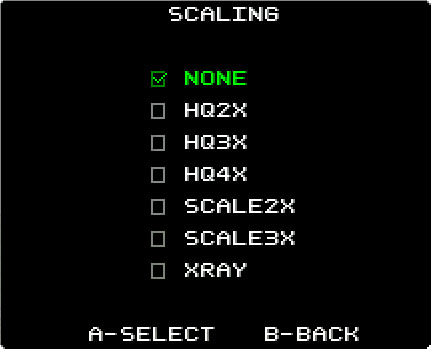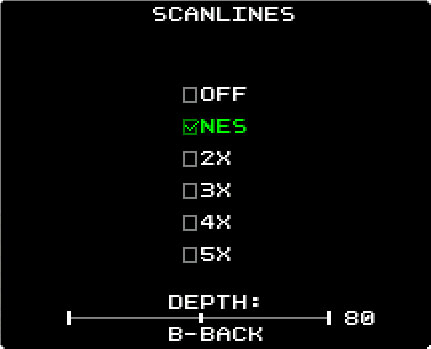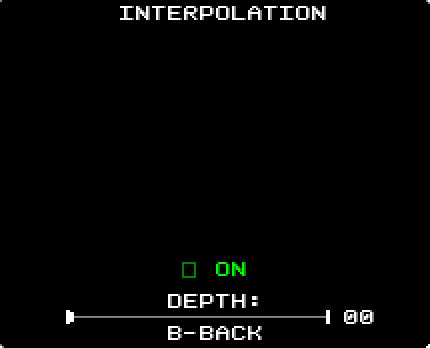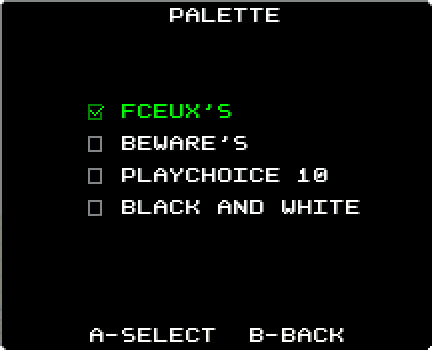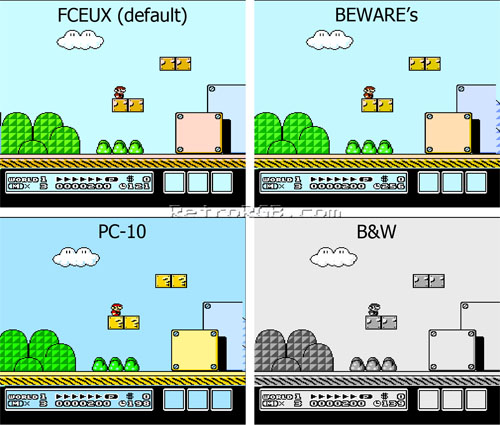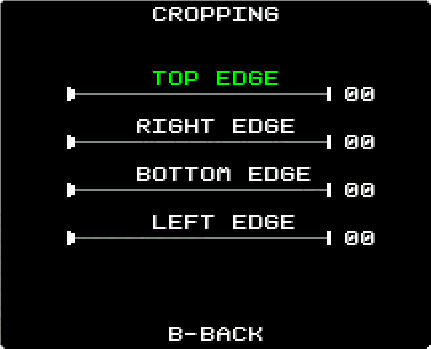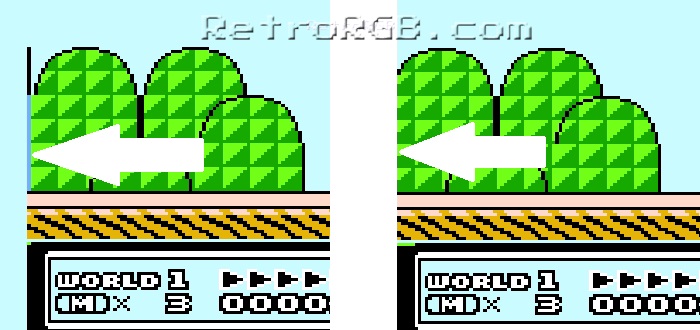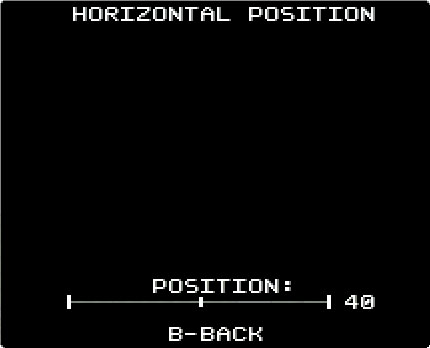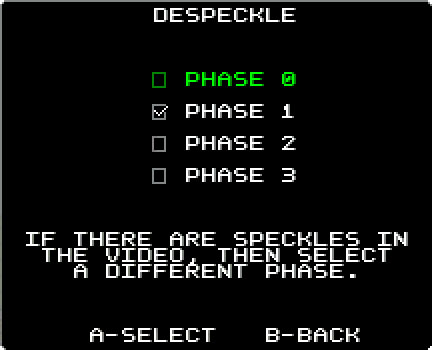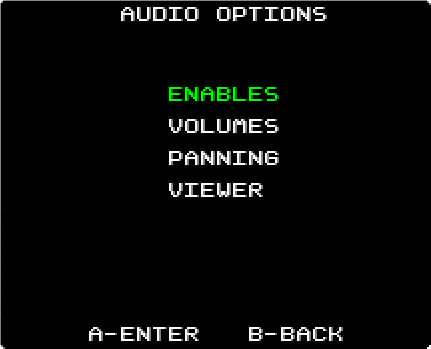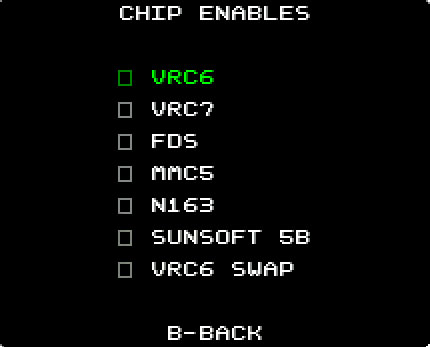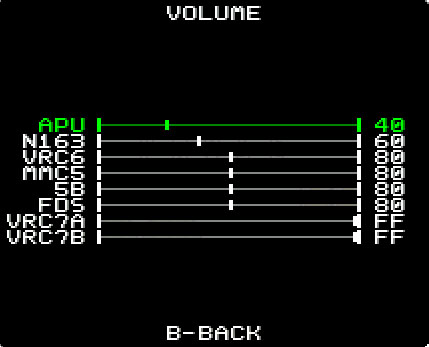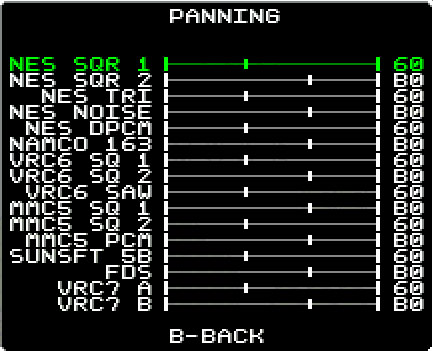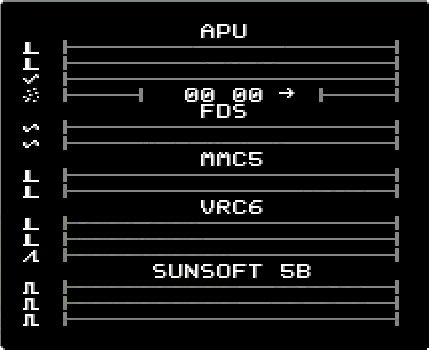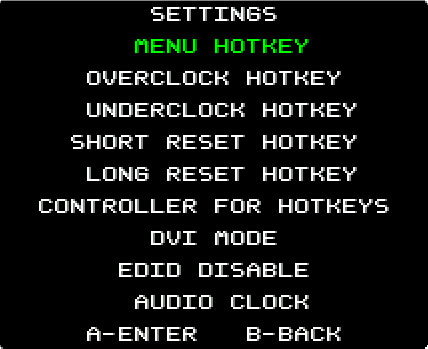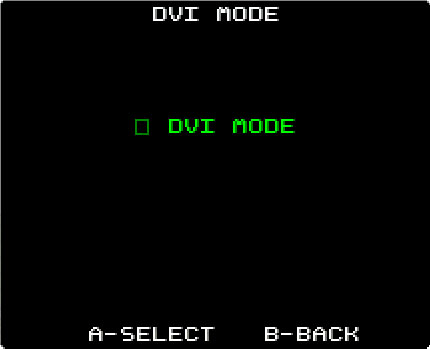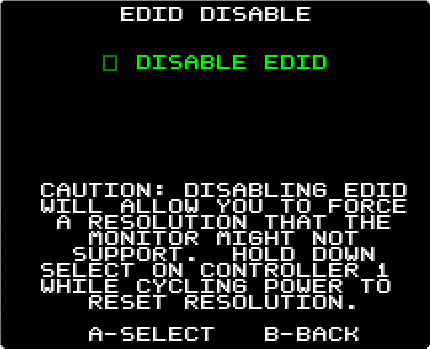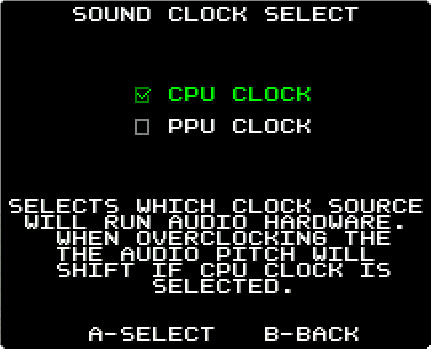NES:Hi-Def NES
The Hi-Def NES was an HDMI add-on kit for the NES created by Kevin Horton (Kevtris), which allowed NES systems to output 480p, 720p and 1080p via HDMI, and included a number of additional features. This page will go into detail about each of the features available, as well as show examples of each. There is also the NES:Height Defnes mod which allows for no-cut installation of a Hi-Def NES into a top loader.
Note that the Hi-Def NES kit has been discontinued for some time as some of its components were marked as EOL (end of life) and are no longer available. As of this writing, there are no publicly known plans to create a new version or a successor of the kit. Hence, this page is provided for historical purposes.
Specs
- Zero lag HDMI - no frame buffer
- All signals, video and audio, are all digitally created with no analog conversion, and are therefore noise-free.
- Fits into top loading and front loading NES units, as well as AV Famicoms.
- Automatic PAL/NTSC chipset detection.
- Three NTSC video modes: 480p, 720p, 1080p at 60 FPS (NTSC CPU/PPU only)
- Three PAL video modes: 576p, 720p, 1080p at 50 FPS (PAL CPU/PPU only)
- Four selectable palettes.
- Five scaling methods.
- Cropping on all four edges of the screen.
- Fully adjustable scanlines.
- Width adjustment to fine tune aspect ratio.
- The Hi-Def NES circuitry replaces the existing power circuit with a more efficient design.
- Expansion audio is generated without the actual hardware in the cart, so if you have a ROM with expansion audio on your flash cart, just turn on the option in the Hi-Def NES mod.
- Complete extended audio chip support: VRC6, VRC7, MMC5, N163, Sunsoft 5B and FDS.
- Realtime audio register viewer.
- Each audio channel is fully pannable.
- Countdown timer on the main menu that starts on powerup, for timing speed runs.
- Reconfigurable hotkeys that can reset the system, overclock, underclock, and access the menu.
- Software upgradable by using a .nes file on flash cart or burned to an EPROM.
Screenshots
Installation Pics
The main board itself fits under the motherboard of a top loader, or under the RF board of the original front loading NES:
The kit also comes with interposer boards for the CPU & PPU that connect via ribbon cable, making for a very clean installation:
Features
- While a game is in progress, you can hit Select + Left at the same time to bring up the main menu. This menu also has an "elapsed time" counter that starts when the console is powered on. This is useful for people recording proof of speedruns:
- The first thing you should do after powering on the Hi-Def NES is start from the bottom and select the "About" menu. You'll want to make sure your firmware version is the latest available. If your firmware is older then the one pictured, your menus might look a bit different:
- Next, check out the "Save and Options" menu. Use this to update your firmware (if its not already on the latest), but also use this page to set an important feature: The "1080p60 height" selection:
- The 1080p60 height page allows you to select if the playable screen will be scaled to either 4 or 4.5 times the original size. 4x is best, but you'll get black bars on the top and bottom of the screen. After selecting, hit B to go back, then select "save settings" from the previous menu (shown above). You'll need to power the NES off and back on for the settings to take place.
Here's examples of both the difference in aspect ratio and how the scanlines only look right in 1080p when scaling to 4x:
The three options available for resolution are 480p (which appears to be 4:3), 720p and 1080p. This is pretty easy: Simply set it to the resolution of your display. Once you change the resolution and hit B to exit, the NES will automatically reboot:
Video Options
Please note that the number of video features that are on or off do not alter the input lag. The FPGA is processing everything in real time and so these extra features cannot add more lag:
The first feature is horizontal stretch, which when used properly can help tweak the video output even more:
The default width is 4:3, allowing the image to stay close to the original aspect ratio. When set to 1080p, you can actually move the slider bar to the left for a perfect 5x horizontal stretch. My Life In Gaming describes this in detail in their Hi-Def NES video.
Of course, you can also use this feature to stretch the 4:3 image to the width of the 16:9 screen.
The next menu screen adds options for different filters and scaling options that can be done to the games:
Each option gives the game a unique look. If you'd like to see a full 1080p screenshot of each, click here to download a zip.
The next option is scanlines - A filter that recreates the original CRT 240p look on a modern TV. Use the up and down arrows to select which scanline option you'd like and use the left and right arrows to select their depth.
Here are screenshots of each scanline setting, taking in 1080p 4x (correct aspect ratio). The depth was set to 80 in each. Click here to download a zip file containing screenshots of each setting in each resolution:
Interpolation will 'blur' the picture in the horizontal direction. If you turn it up, it will become more blurry. It's most noticeable with no scaler on.
Next are the different color palette choices offered. The FCEUX palette is enabled by default, but you can choose between Beware's, PlayChoice-10 (the arcade color palette) and black & white:
Here's screenshots of each palette.
Cropping is the next feature that helps improve the look of older games on newer TVs; When these NES games were created, they were designed to be used with CRT TVs. Those TVs always had some kind of overscan, which would cut off the edges of the screen. Newer TVs display the full resolution and artifacts can appear around the edges.
Using the cropping feature can allow you to adjust each game and get rid of any unwanted side-effects, while maintaining the original aspect ratio.
The horizontal position setting is great for two reasons. First, if you need to crop the game (as shown above), you can use this feature to re-center the game.
Second, if you're playing games for a long period of time, you can shift them all the way to each side to help reduce screen burn-in:
Despeckle is designed to work around a bug found older versions of the PPU: When register 2000 is written to, it corrupts the EXT pin data, which creates speckles on the screen. By changing this setting, it will capture the pixel data at a different time, thereby avoiding the speckles. The H rev PPU seems to have fixed the problem, but G and earlier will have it. This can be seen on certain games like Zelda and Double Dragon, but not all. If you don't see speckles, you won't need to worry about this at all and if you do, simply change the phase:
Audio Options
The Hi-Def NES offers many audio options as well:
The chip enables menu simply toggles which of the expansion audio chips can be heard:
You can adjust the volume of each individual chip. This isn't necessary for most original games, but comes in handy when using flash carts as the audio volumes aren't always accurate:
The panning menu is for adding a slight separation of the 2A03 audio channels creating a "fake stereo" effect. Many people don't like how this makes their NES sound, but it's personal preference:
The viewer allows you to see which audio chip is being used during gameplay:
Settings
The settings menu offers advanced tweaks that most people wouldn't need to change:
In this example, all the hotkey menus have been combined to do the same thing. Each menu allows you to choose the combination of buttons you'd use to enter the menu, over or underclock the processor, and remotely reset the system using just the controller. Also, the controller selection allows you to choose which controller is the one that activates the hotkeys. Default settings are shown checked off below:
You can enable DVI Mode for displays that may have issues with certain HDMI outputs. This also disables audio over HDMI.
EDID is an acronym for Extended Display Identification Data. With this enabled, the Hi-Def NES detects the highest resolution the display can handle. In rare cases, this may be incorrect and disabling EDID will allow you to force the intended resolution on any display. This is not a feature that most people would ever need, but it's good that it was included:
By default, the audio clock gets determined by the CPU. That means if you overclock the CPU, the audio will be higher pitched and if you underclock the CPU, it'll get a lower pitch. By setting the sound clock to sync with the PPU, you can overclock the CPU without changing the sound pitch.
Lag
The NES's composite video output barely works at all when HDMI is connected, but Tepple modified his NES version of the 240p Test Suite so that you can at least see the stopwatch counter. After testing, it's clear that the Hi-Def NES kit adds no lag to the HDMI output.

